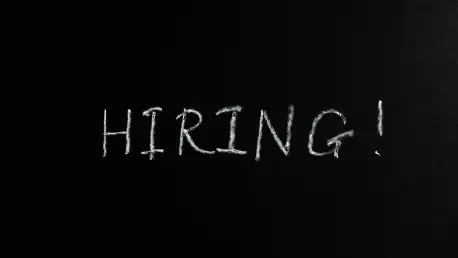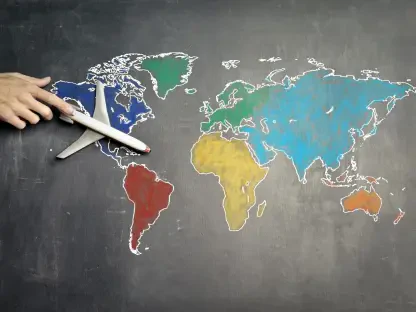Listen to the Article
Did you know that artificial intelligence is not only taking over the business world as a whole—but also making a big impact on recruiting and Human Resources?
If you’re a decision-maker in the field, these news might seem grim. But they don’t have to be; not when you can use the technology to your own advantage and build the best high-performing teams with it. And there are some good reasons why you should follow this path. Traditional hiring processes are falling behind, with inefficiencies and unconscious biases that hidden your speed, equity, and capacity to do fast hiring. That’s why many of your peers are faced with lengthy time-to-hire metrics (sometimes stretching to a boggling 44 days on average globally) while struggling to fill up roles and choose their talent from a diverse enough candidate pool. Artificial intelligence can be your savior here, helping you reduce the risk of losing potential employees to more agile competitors, simplifying the overall process, and making sure there’s no bias involved.
This article will show you why artificial intelligence is the new edge you need to foster fairness, and, even more importantly, match emerging Human Resources trends or address systematic bottlenecks that have been affecting your industry for decades.
Why is Artificial Intelligence a Catalyst for Transforming Your Hiring?
The answer is a simple one. All Human Resources professionals and recruiters know how slow, difficult, and complex the traditional approach to getting more talent onboard is. Many of the tasks you’re facing are repetitive ones that could be automated, saving both time and resources better used with more delicate functions.
Machine learning and natural language processing are your key solutions for the Human Resources workflows. In just moments—or even in real-time—artificial intelligence systems can move through thousands of resumes, slashing time-to-hire from weeks to even days. If there are clear hiring timelines you must follow in order to keep all operations running smoothly, this technology addition will not only help you meet deadlines, but also take the stress out of the journey. It’s the perfect solution to redirect your time from candidate sourcing and the initial screening to engagement and cultural fit assessments.
And the benefits go beyond just the speed factor. Artificial intelligence enables greater scalability than anything you’ve been allowed to enjoy in the past, making high-volume hiring with precision a reality—and not a dream. AI-enabled predictive analytics will easily evaluate vast datasets to match your roles with candidates based on their skills and experience, rather than relying on recruiter instinct or manual guesswork. The best part in this approach? It allows you to adapt to seasonal or rapid expansion needs, delivering consistent quality in talent acquisition without inflating overhead costs. The business outcome becomes clear: reduced downtime, improved operational agility, a more attractive business for talent, and a greater competitive edge.
How you deliver and engage in interviews will most likely change, too. Artificial intelligence doesn’t stop at just handling the paperwork for you. Virtual assistants are starting to grow in popularity due to their advantage in avoiding bias. From assessing verbal and non-verbal cues to forecasting long-term performance and cultural fit or making the best negotiations or onboarding decisions, such assistants can handle all the heavy lifting and provide the outcomes you desire with speed and precision. The technology benefits your candidates too; who will be compelled to join your operations through attractive, personalized career paths and incentives.
Which Companies Are Starting to Deliver on the Promise of AI-Enabled Hiring?
Workday is one of the pioneers in powering up artificial intelligence for Human Resources. And currently, they’re focused on bringing you best-of-breed Recruiting Agents that automate hiring tasks across the entire Workday platform. These assistants handle everything you can automate: outreach efforts, sourcing passive candidates, finding the right candidates for the roles that would best fit them in your enterprise. Their early implementation will help you increase the overall efficiency of all human recruiters and make sure they all can reach their full potential in reaching talent.
Manatal has a similar approach. To help you assess whether they’re the right artificial intelligence platform for your enterprise, they offer a 14-day free trial—which allows you to use their recruitment capabilities, designed to source and hire candidates faster. It’s an easy-to-use solution with no significant learning curves or complicated interfaces, delivering customizable pipelines, a Kanban board, and the opportunity to share your postings on 2,500+ free and premium channels. Additionally, the platform holds another hidden advantage: that of allowing you to manage all of your sponsored job advertising projects from a single platform, reducing the hurdle of juggling multiple channels and reshaping your strategy across a variety of campaigns.
In comparison, Eightfold’s Talent Intelligence Platform uses deep-learning algorithms to get the job done; surfing through datasets to assess skills that might not be explicitly listen on your candidates’ resume, but which might be relevant to your needs. It delivers intuitive technology meant to expand your overall hiring reach, ensure a more relevant fit between talent and job requirements, and outgrow limited views on skillsets or career paths.
Closing Thoughts
When you’re reflecting on the transformative and ever-expanding power of artificial intelligence in recruitment or Human Resources, it’s important to keep a vital reality in mind: the technology is here to stay, and it’s time to adapt to its usage. Instead of avoiding it, headhunters and recruiters can make the shift to automated, data-driven hiring that tackles longstanding inefficiencies and inequities. It’s the ideal tool for companies that see hiring as a strategic and long-term vital asset for the organization—or are ready to fully optimize how they approach hiring acquisition.
And as your own business move forward, you’re expected to adapt. The human element won’t be replaced, but priorities should lie in adopting artificial intelligence solutions that can aid their efficiencies, align with specific corporate needs, and ensure sustainable impact.
Ultimately, embracing this evolution positions companies to not only attract top talent but also redefine workforce excellence in a dynamic market.









